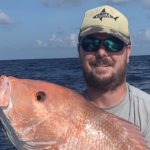What is CFEMM?
The Center for Fisheries Electronic Monitoring at Mote Marine Laboratory (CFEMM), located in Sarasota, FL is the only program dedicated to developing and implementing electronic monitoring (EM) video technology as a tool in the Gulf of Mexico commercial reef fish fishery to provide industry and management with accurate, independent data required to ensure long-term fishery health.
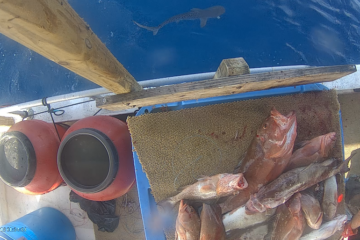
In partnership with volunteer commercial fishing vessel owners and captains, industry organizations, federal and state management agencies, software and equipment provider Saltwater Inc. (Anchorage, AK), and other stakeholders, the CFEMM is leading innovative projects aimed at filling gaps in at-sea data collection, complementing data collected by the National Oceanic and Atmospheric Administration (NOAA) Fisheries Observer Program.
How does CFEMM utilize EM?
The Saltwater Inc. EM systems installed on partnering vessels include light emitting diode cameras, a computer processor, and sensors that record trip length, speed, hydraulic pressure, location, and fishing events (sets, soaks, and hauls) on a trip timeline. Video recordings (with no sound) are reviewed confidentially by the CFEMM team to document fishing effort, composition of catch and bycatch, catch fate (retained, discarded), fish condition at capture (e.g. damaged by predators, apparent barotrauma), and short term survival of discards (e.g. swam down, floated away, eaten by predator) (Figure 1).
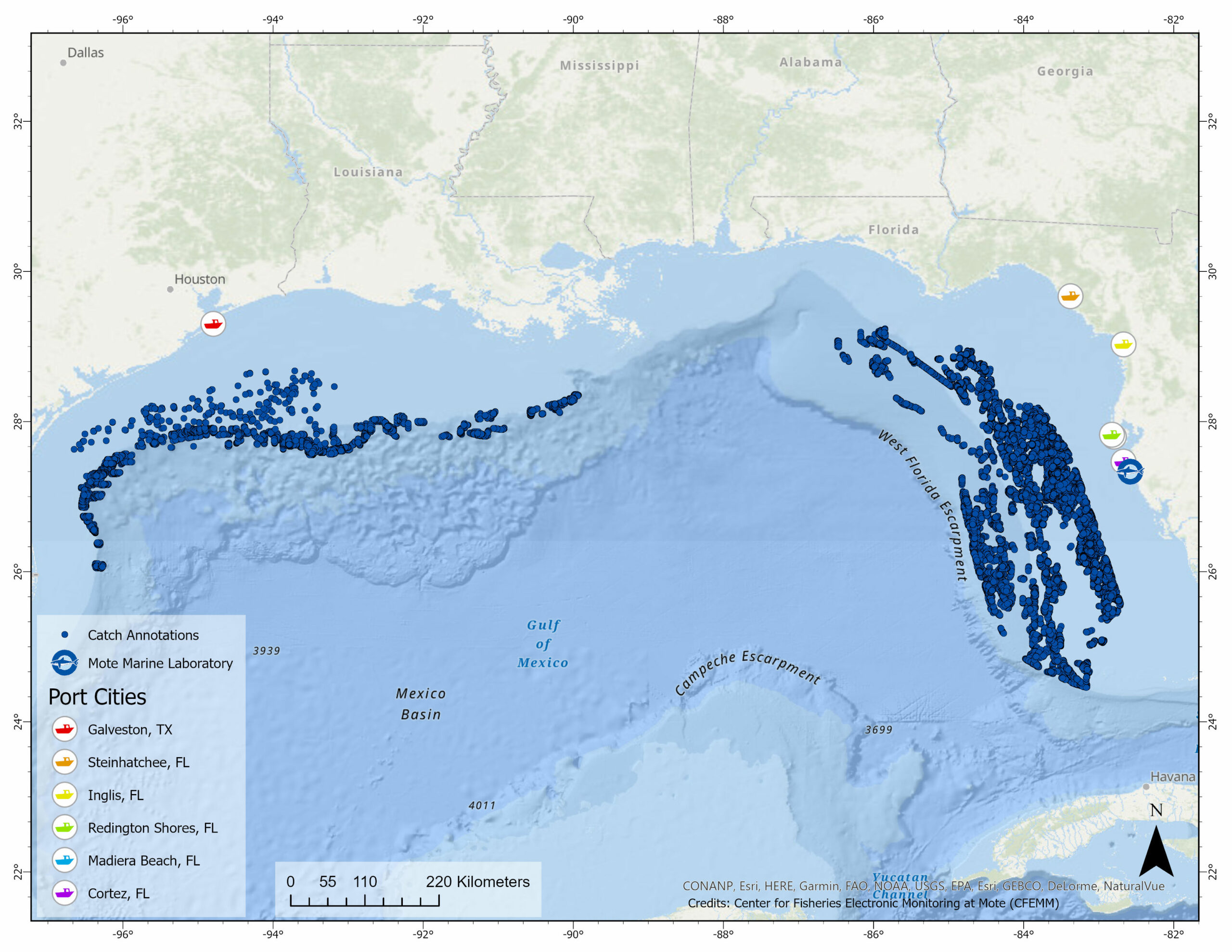
Since July of 2016, the CFEMM has collected data Gulf-wide from 22 vessels (bottom longline and vertical line) located along Florida’s west coast and the Texas central east coast. To date, the volunteer vessels have contributed 577 trips that have covered 4,884 sea days, with 4,040 hauls reviewed that have resulted in 200,500 species annotations from 159 unique species and or species groupings (Figure 2). It is of note that the CFEMM reviews 25% of randomly selected set-haul events in a given trip and archives the remaining 75% for data extraction and auditing as needed.
What are current CFEMM research projects?
The past several years, the CFEMM has been addressing industry and management data gaps with innovative cooperative research projects that focus on developing novel tools and approaches to data collection, bycatch reduction, data and mapping automation, and artificial intelligence. Importantly, the resulting data products are provided to industry and management to promote efforts towards the long term sustainability of the Gulf reef fish fishery.
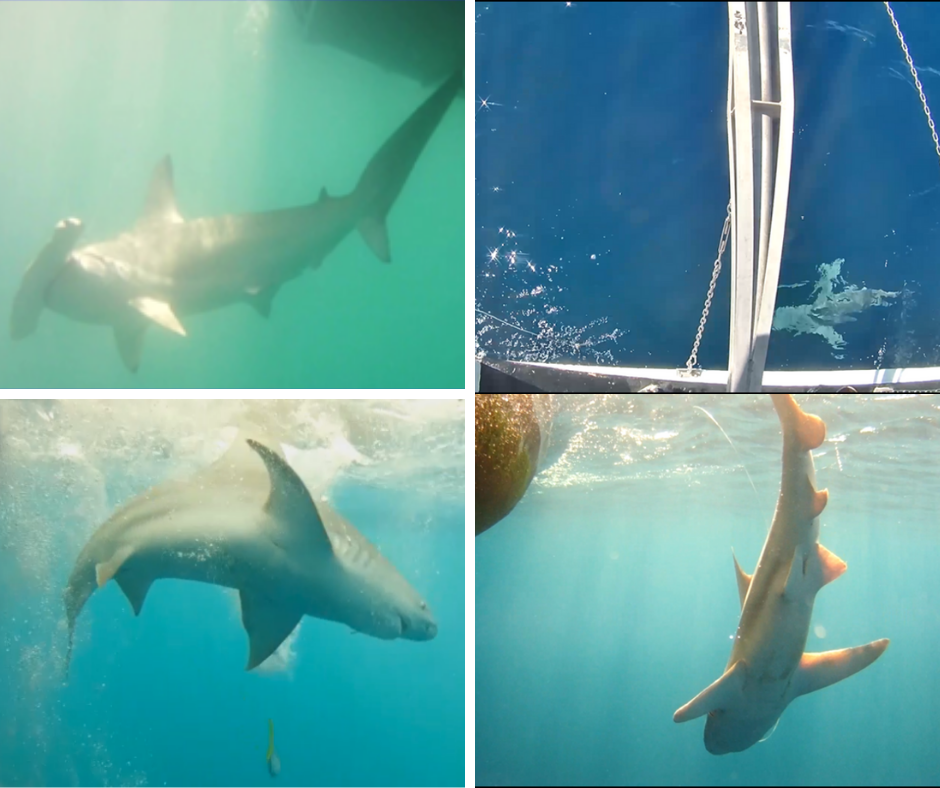
UNDERWATER CAMERA
The first underwater camera (UCAM) integrated with an EM system was developed specifically for a problem encountered with reviewers being able to identify to species the large sharks that were released at the rail while underwater. This tool provided a unique view to improve identification and also to obtain each individual’s respective sex, size range, and fate at release (Figure 3). The UCAM was also beneficial in documenting the presence and interactions of potential predators near the vessel, including marine mammals such as bottlenose dolphins.
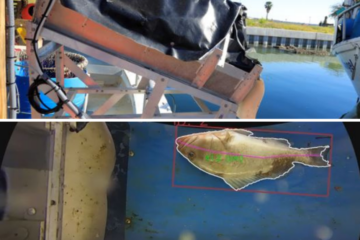
DISCARD CHUTE
The first discard chute modified for a Gulf bottom longline vessel with assistance from NOAA Alaska Fisheries Science Center and Saltwater Inc. was evaluated. Vessel crew discarded their fish through the chute where a camera recorded their passage. Utilizing artificial intelligence, an algorithm successfully provided measurements for the discards (Figure 4). Automated length measurements are a stepping stone in the complete automation of electronic monitoring in this fishery.
STERN CAMERAS
Standard EM systems with camera views that focus only on bottom longline hauling and fish processing activities leave out an important component of sustainable commercial fishing – the post-release status of discarded fish. Adding stern boom-mounted cameras to vessels significantly improved documentation of short-term survival of individual discarded catch, including whether a fish swam down, floated away, or if there was a near vessel predator interaction (depredation) (Figure 5).
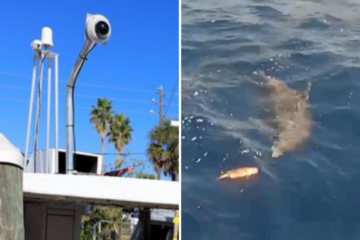
HOOK STUDY
A recently completed study demonstrated that EM can be successfully used as a data collection platform for testing gear modifications and their effects. A collaboration with industry members addressed a vessel captains’ specific question concerning if EM could be used to document the impact of two hook sizes (13/0 vs 15/0) on fish discard and retention rates to inform more sustainable gear selection (Figure 6).
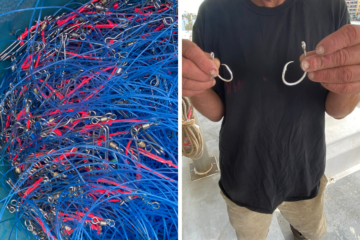
Vessels were provided with 10,000 hooks and 4,000 colored and uncolored longline clips to differentiate between hook sizes and allow for the video reviewer to assign individual fish to each of the two hook sizes. Results showed that the discard rate of red grouper decreased significantly with 15/0 hooks, but the larger hooks also led to a projected small decrease in retained catch. These results highlight the need for discussions concerning the tradeoffs between economic value and discard reduction, and whether management can incentivize industry to offset minor short-term economic losses for the benefit of the fishery as a whole.
SPATIAL ANALYSIS
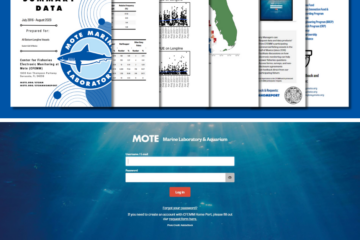
Significant advancements have been made in the automation of statistically significant hot spot maps and vessel data summary reports for providing to participating industry members. Fishermen receive regular personalized reports, including tables of vessel-specific statistics on species of interest retained and discarded, figures of their catch per unit effort over time, and maps of high catch and low bycatch areas that are used to improve fishing practices and avoid bycatch based on their historical fishing data. These data products are distributed as hard copies or are accessible through the CFEMM Home Port, a password-protected website that allows commercial fishermen, fisheries managers, researchers, and other stakeholders to exchange knowledge produced through EM in the Gulf (Figure 7).
BIOLOGICAL SAMPLING
A recent collaboration with the NOAA Southeast Fishery Science Center, Panama City, FL and Texas A & M University, Corpus Christi, TX, with assistance provided by Texas Sea Grant, Galveston, TX engaged commercial Gulf reef fish fishermen from Florida and Texas in a unique project to provide data deficient fish species to help fill data gaps in species genetics, and age and growth for NOAA to use in improving management plans. This project successfully involved EM vessel participants that contribued their efforts to supplement standard methods of fish sample collections by at sea observers and dock side samplers. Fish species requested by NOAA and provided by the fishermen included speckled hind, yellowmouth grouper, yellowedge grouper, scamp, almaco jack, blackline tilefish, blueline tilefish, golden tilefish, queen snapper, silk snapper, blackfin snapper, wenchman snapper, and margate.

During their trips the fishermen marked fish from the list with unique numbered tags and passed them by an EM camera to correlate each fish with the specific date, time, and catch location recorded on the EM system. At the docks, more than 260 fish encompassing 22 species were provided by the fishermen to the CFEMM to collect approximately 750 biological samples, including otoliths (ear bones for aging), fin clips (for genetic analysis), and respective fish weights and lengths (Figure 8). These samples with corresponding spatially-explicit EM data were provided to Texas A&M and NOAA who will process the samples for determining age, growth, and population connectivity of the species.
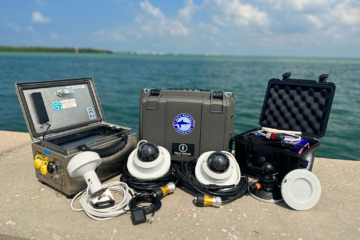
PORTABLE EM SYSTEM
A new portable EM system, SWIM-Mobile, by CFEMM partner Saltwater Inc. was the first small-footprint portable EM system of its type (Figure 9) to be tested in the Gulf on a recreational and a charter fishing vessel. These systems are easy to transport, set-up, and use, allowing individual fishermen opportunities to collect accurate data in a variety of different fisheries with vessel space limitations.
ARTIFICIAL INTELLIGENCE
Incorporating an artificial intelligence (AI) algorithm into the video review process is in development in partnership with CVision AI, Boston, MA to expedite the review of EM video from future fishing trips and increase efficiency of reviewing past archived EM footage. Once fully integrated, the algorithm will allow for more rapid review of footage with accurate species identification for producing robust and near real-time comprehensive data products for industry and management (Figure 10).
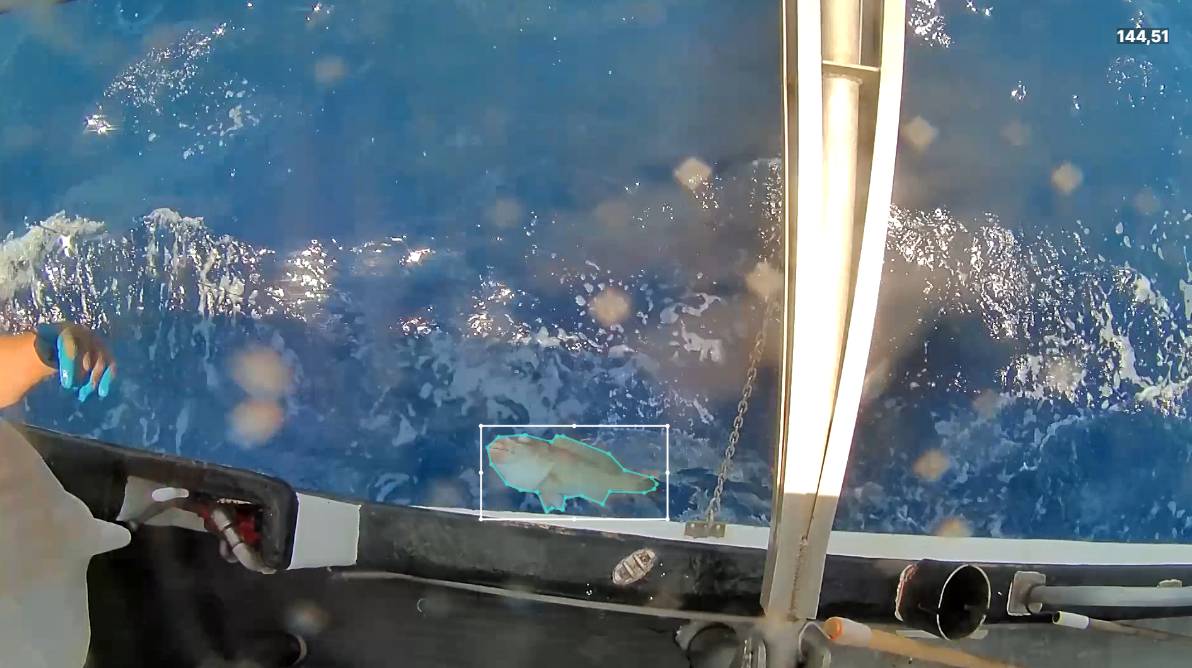
OPTIMIZED RETENTION
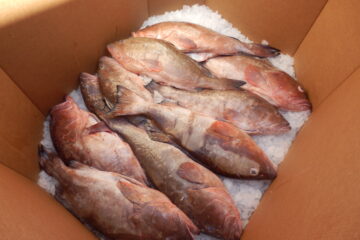
Preparations are in place to commence a project in partnership with the Gulf of Mexico Reef Fish Shareholders’ Alliance, in which the fishermen will fish under a Federally approved Exempted Fishing Permit (EFP) to assess the feasibility of “optimized retention” of red grouper (Figure 11). The goal of the EFP is to reduce effort in areas with high discard rates and reduce discards in areas with high discard mortality rates by incentivizing fishermen to target areas that minimize overall biomass impacts to the stock. Based on the results of this project, additional species with high discard and mortality rates, such as blueline tilefish, may be addressed.
What is on the horizon for the CFEMM?
Next steps include the continued development of novel approaches and effective and efficient applications to contribute scientifically sound data to fill data gaps needed by industry and management in their efforts to improve fisheries sustainability. The CFEMM is also working towards applying newly developed AI algorithms, integrating EM expertise in additional fisheries, and building web-applications for stakeholders to explore data collected (Figure 12).
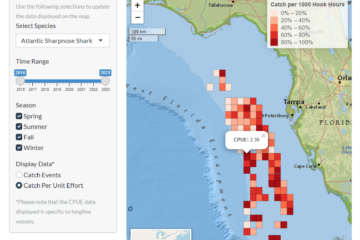
It Takes a Fleet!
It is with the support and partnerships between science, industry, and management representatives that the CFEMM is able to provide accurate, independent data to ensure long-term fishery health in the Gulf of Mexico. Generous contributions and cooperation from funders, vessel owners, captains, crew, fish houses, and state and federal management continue to allow the CFEMM to apply adaptive approaches and proactive measures to address data gaps in this fishery.
The CFEMM has received funding support from the National Fish and Wildlife Foundation Innovation and Electronic Monitoring and Recording Programs, National Oceanic and Atmospheric Administration Bycatch Reduction Engineering and Cooperative Research Programs, Net Gains Alliance, Environmental Defense Fund, Ocean Conservancy, Sustainable Fisheries Partnership, Sea Pact, and Sustainable Ocean Alliance.
Interested in what CFEMM does?
Please reach out to Carole Neidig (cneidig@mote.org), M.S., CFEMM Director and Staff Scientist with inquiries and visit us at mote.org/CFEMM.
Projects in the Field is a series of independently produced articles profiling work supported by NFWF’s Electronic Monitoring & Reporting Grant Program, and is meant to raise awareness and support for these important initiatives.



